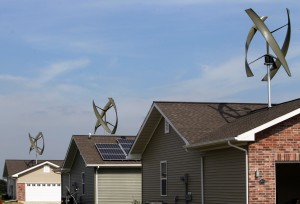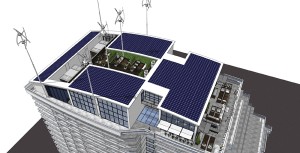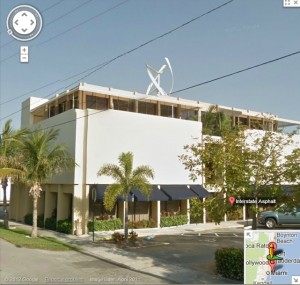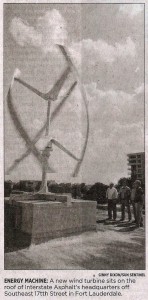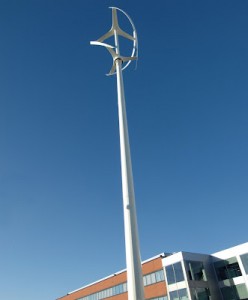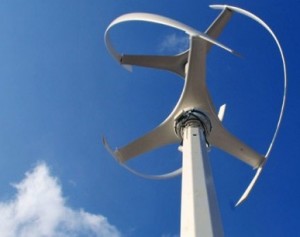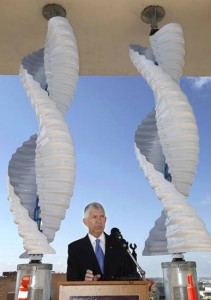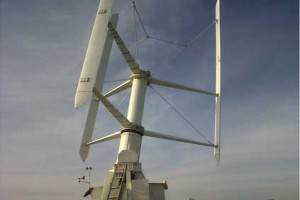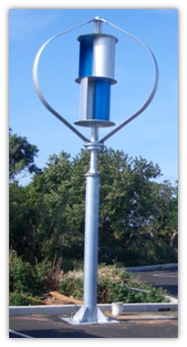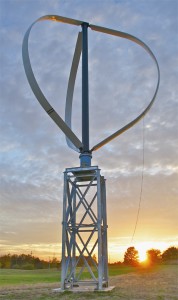Have you ever seen an entire community of wind turbines? Lexington Farms Subdivision in Jerseyville, Illinois is exactly that. This community is totally energy self sufficient due to a combination of wind turbines and solar panels installed on every house.
The Illinois Housing Development Authority spent over $1.6 million to build the housing development, which is designated for lower income earners (below $41,000 annually). Each of the 32 single-family dwellings sports a Urban Green Energy vertical axis wind turbine and a set of solar panels. Even the street lights are powered by smaller, conventional wind turbines. Each hybrid system can produce up to 8.3 kW of energy, enough to take a large chunk out of the renters’ electricity bills.
Each Urban Green Energy VAWT is an eddyGT, a 1kW wind turbine, standing about 9 ft tall. These turbines are rated for speeds of 26 mph, but turn in wind speeds as low as 8 mph. Imagine driving into a neighbourhood and seeing 32 wind turbines rotating above each house! Perhaps in a few years it won’t be such a rare sight, especially if municipal governments loosen their bylaw restrictions.
In the video below, the neighbourhood residents are interviewed and answer questions on the performance of the wind turbines. Most of them have seen reductions of $50 to $100 a month on their utility bills, with one guy even claiming a negative bill. This could happen if your turbine provides more power than you need and the excess energy gets fed back into the grid.
Click here for more information about Urban Green Energy.
[youtuber youtube=’http://www.youtube.com/watch?v=-nWeVeiBmj0′]

